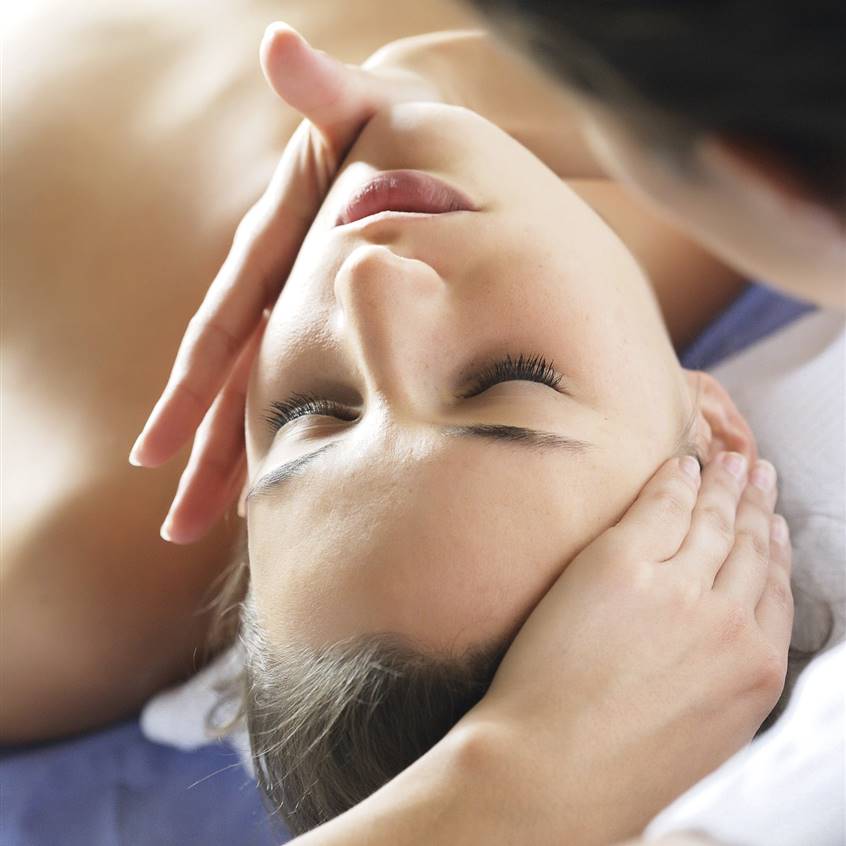Clenching your teeth when sleeping, often from stress, is the main cause of jaw problems. So, you can get to release the accumulated tension.

At birth the jaw allows to take the first air, the first food, the love of the mother. In breastfeeding the baby must suck, breathe through the nose and at the same time swallow, which stimulates the shape of the joint and the balanced growth of the bone.
With age the jaw varies. The baby’s is narrow, but it widens and in adulthood reaches its maximum size. In old age, if teeth are lost, it narrows again.
It is a multifunctional joint: it intervenes in opening the mouth, chewing, breathing and swallowing, in addition to talking, kissing, loving… In a single day he can make ten thousand moves!
PROBLEMS OFTEN HAVE BOTH A PHYSICAL AND EMOTIONAL CAUSE
The set of problems that affect the joint and the muscles that surround it is known as temporomandibular joint dysfunction.
In an initial phase you feel only muscle pain. Over time, a reducible subluxation or disc dislocation may occur: a click is heard when opening or closing the mouth, with a slight deviation when opening, like a sprain.
The main causes of jaw problems are:
1. BREATHING THROUGH YOUR MOUTH
It is advisable to breathe through the nose. Mouth breathing along with atypical swallowing (with the tongue between the teeth) prevents good occlusion.
2. INCORRECTLY OCCLUSION OF THE JAW
When the upper jaw and the mandible do not relate well to each other, either one is larger or narrower or is forward or backward, problems may appear in the temporo-mandibular joint and posture.
A jaw deflected to one side produces a postural asymmetry of the shoulders to the same side. Wearing a poorly fitting prosthesis or a tooth that collides prematurely with its antagonist can also cause problems.
3. SUFFERING BLOWS OR FALLS
Skull, sacrum and jaw are connected. A fall on the tailbone or whiplash (a blow from behind, as in the car) can affect the jaw.
An osteopath can help rebalance the cranio-sacrum-mandibular axis.
4. HAVING INAPPROPRIATE HABITS
Putting the tongue down when swallowing, nail biting, nibbling of lips or cheeks or piercings in the tongue or lip favor jaw joint problems.
5. SUFFERING FROM BRUXISM
This unconscious contraction of the masticatory muscles is a physiological defense against stress. It is common when sleeping. If it is prolonged it can wear down the teeth, retract the gums and damage the temporo-mandibular joint. Sometimes so much force is exerted that teeth are fractured. Upon awakening there may be muscle spasm and pain.
The problem is aggravated if there is bad occlusion.
6. HAVE LIGAMENT LAXITY
There are tall, thin people who have very flexible ligaments. They are people of phosphoric or fluoric constitution to whom homeopathy can be useful. Sometimes a simple yawn can be problematic in these cases.
HOW TO RELAX THE JAW
By Juan José Plasencia
This complex and sophisticated joint is involved in three important physiological functions: chewing, in an initial phase of digestion; swallowing, allowing swallowing the food already chewed; and phonation, since its opening and closing movements intervene in the articulation of sounds and, therefore, facilitate verbal and sound communication.
The jaw, however, is also a physical reflection of emotional health, which should not surprise us considering that a third of the nervous system is linked to this joint.
Feelings such as anger, anxiety, fear or insecurity can manifest unconsciously through the jaw, favoring various alterations: bruxism, tooth mobility, pain in the facial muscles and temporomandibular joint, otitis, tension vertigo, neck pain, visual fatigue …
If any of these disorders occur, it is necessary, first of all, to identify the physical or emotional cause that originates it to solve the root problem, since it is an involuntary joint dysfunction.
Body or energy techniques, such as RPG, rolfing, massage, chiropractic or some self-massage and acupressure exercises are good allies, as they allow awareness of this area, facilitate relaxation and reduce stress.
4 SELF-MASSAGE EXERCISES WITH ACUPRESSURE TO RELAX THE JAW
PRESSURE ON MASSETER
Place your fingertips on the jaw area and exert a constant and firm pressure for about three minutes. While maintaining pressure on both sides of your jaw, take deep breaths, so that releasing the air helps release tension.
This exercise can be done under the shower at the end of the day.
DIGITAL PRESSURE IN THE NECK
It places the fingertips on the muscles of the side of the neck, exerts pressure along the muscle below the earlobe.
Maintain a constant pressure for two minutes, while breathing regularly.
Then perform the same exercise on the other side.
PRESSURE FOR THE GALLBLADDER
With the fingertips exert pressure on the reflex point of the meridian of the gallbladder, which is located in front of the ear.
Hold the pressure for three minutes, while making a circular motion on the indicated point.
Breathe deeply and, when releasing the air, open your mouth to release the tension contained in this area.
MASSAGING THE MASSETER
Place your hands completely relaxed on your cheeks.
Exert moderate pressure and make circular movements from the front of the ears to the chin, so that you cover all the muscles on the sides of the face.
While performing this exercise, breathe consciously and release all the tension located in this area.



